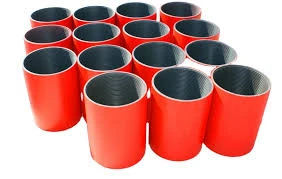- Afrikaans
- Albanian
- Amharic
- Arabic
- Armenian
- Azerbaijani
- Basque
- Belarusian
- Bengali
- Bosnian
- Bulgarian
- Catalan
- Cebuano
- Corsican
- Croatian
- Czech
- Danish
- Dutch
- English
- Esperanto
- Estonian
- Finnish
- French
- Frisian
- Galician
- Georgian
- German
- Greek
- Gujarati
- Haitian Creole
- hausa
- hawaiian
- Hebrew
- Hindi
- Miao
- Hungarian
- Icelandic
- igbo
- Indonesian
- irish
- Italian
- Japanese
- Javanese
- Kannada
- kazakh
- Khmer
- Rwandese
- Korean
- Kurdish
- Kyrgyz
- Lao
- Latin
- Latvian
- Lithuanian
- Luxembourgish
- Macedonian
- Malgashi
- Malay
- Malayalam
- Maltese
- Maori
- Marathi
- Mongolian
- Myanmar
- Nepali
- Norwegian
- Norwegian
- Occitan
- Pashto
- Persian
- Polish
- Portuguese
- Punjabi
- Romanian
- Russian
- Samoan
- Scottish Gaelic
- Serbian
- Sesotho
- Shona
- Sindhi
- Sinhala
- Slovak
- Slovenian
- Somali
- Spanish
- Sundanese
- Swahili
- Swedish
- Tagalog
- Tajik
- Tamil
- Tatar
- Telugu
- Thai
- Turkish
- Turkmen
- Ukrainian
- Urdu
- Uighur
- Uzbek
- Vietnamese
- Welsh
- Bantu
- Yiddish
- Yoruba
- Zulu
Stainless Steel Hose Connectors for Durable and Reliable Fluid Transfer Solutions
Understanding Stainless Steel Hose Couplings
Stainless steel hose couplings are essential components in various industries, facilitating the connection of hoses and ensuring secure fluid transfer. Known for their durability, resistance to corrosion, and ability to withstand high pressure, stainless steel couplings find applications in sectors such as manufacturing, automotive, medical, and food processing.
What Are Stainless Steel Hose Couplings?
Hose couplings are devices that connect two hoses together or attach a hose to other equipment, like pumps or valves. Stainless steel hose couplings are made from various grades of stainless steel, with the most common being 304 and 316. The choice of stainless steel grade typically depends on the application's specific requirements, including environmental conditions and the type of fluids being transferred.
Benefits of Stainless Steel Hose Couplings
1. Corrosion Resistance One of the primary advantages of stainless steel is its ability to resist corrosion. In industries where exposure to moisture, chemicals, and varying temperatures is a norm, stainless steel couplings provide a long-lasting solution that maintains integrity over time.
2. Strength and Durability Stainless steel couplings offer excellent tensile strength, making them suitable for high-pressure applications. Unlike plastic or rubber alternatives, stainless steel does not crack or break easily, ensuring that connections remain secure under stress.
3. Hygienic Properties In the food and beverage industry, hygiene is paramount. Stainless steel is non-porous, which means bacteria and other contaminants cannot easily adhere to its surface. This property allows for easy cleaning and sanitization, adhering to industry standards.
stainless steel hose couplings

4. Versatility These couplings are available in various sizes and configurations, allowing them to be used in numerous applications. Whether you need a coupling for a high-pressure water line or a mild chemical transport system, there’s likely a stainless steel option available that matches your needs.
5. Temperature Resistance Stainless steel can withstand a wide range of temperatures, making it suitable for both hot and cold liquids. This characteristic is particularly important in industries such as oil and gas, where temperature fluctuations can be extreme.
Installation and Maintenance
The installation of stainless steel hose couplings is relatively straightforward, but it is crucial to follow best practices to ensure a proper seal. Engaging the correct torque values while tightening your clamps and ensuring that the hoses fit snugly into the couplings will minimize leaks.
Regular maintenance involves inspecting the couplings for signs of wear or corrosion, especially in applications involving harsh chemicals. It is also vital to ensure that connections remain tight and free from any leakage. If any damage or degradation is noted, the affected coupling should be replaced promptly to avoid potential system failures.
Conclusion
In summary, stainless steel hose couplings are a critical component in numerous applications requiring reliable fluid transfer. Their robust nature, resistance to corrosion, and ability to maintain cleanliness make them an ideal choice across various industries. By selecting the appropriate size and type of coupling, businesses can enhance operational efficiency and safeguard their systems against leaks and failures. Understanding and investing in quality stainless steel hose couplings can significantly impact the longevity and reliability of fluid management systems.
-
Tubing Pup Joints: Essential Components for Oil and Gas OperationsNewsJul.10,2025
-
Pup Joints: Essential Components for Reliable Drilling OperationsNewsJul.10,2025
-
Pipe Couplings: Connecting Your World EfficientlyNewsJul.10,2025
-
Mastering Oilfield Operations with Quality Tubing and CasingNewsJul.10,2025
-
High-Quality Casing Couplings for Every NeedNewsJul.10,2025
-
Boost Your Drilling Efficiency with Premium Crossover Tools & Seating NipplesNewsJul.10,2025







